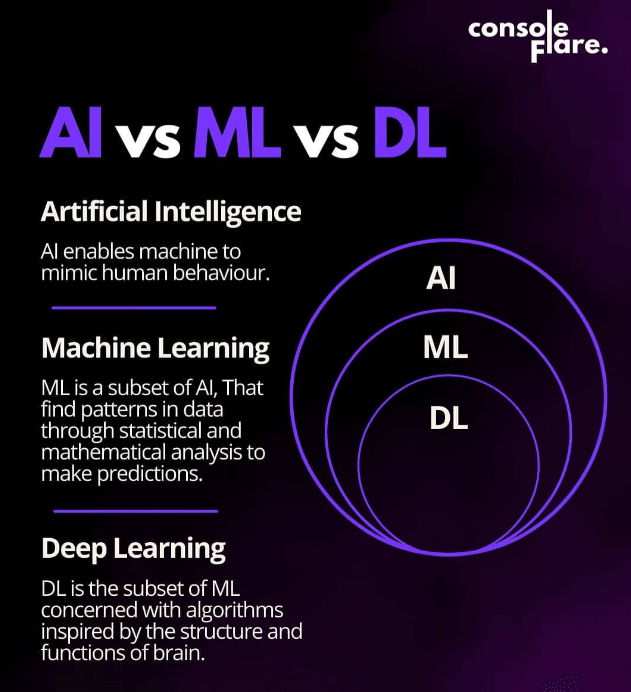Deep Learning is a subset of Machine Learning that uses neural networks with multiple layers to learn from data. These layers learn increasingly abstract representations of the input data, allowing the network to learn complex patterns and make predictions or decisions. Deep Learning is used in many applications such as image recognition, natural language processing, and self-driving cars.
DL (Deep Learning) is used for a variety of tasks because it is able to automatically learn and extract features from large amounts of data. This allows it to perform well on tasks where there is a lot of data available and where traditional, hand-designed features may not work well. Some specific examples of why DL is used include:
- Image Recognition: Deep Learning models can learn to recognize objects, animals, and people in images with high accuracy.
- Natural Language Processing: Deep Learning models can be trained to understand natural language text and speech, making it possible to build chatbots, language translation systems, and more.
- Self-driving cars: DL models can be used to process images and sensor data from cameras and lidar to detect and track objects on the road, enabling self-driving cars to navigate safely.
- Anomaly Detection: Deep learning models are good at detecting unusual patterns in data which can be used for anomaly detection in various fields such as network security, medical imaging, and manufacturing.
- Recommender Systems: Deep Learning models can be used to recommend items to users based on their browsing and purchase history, watch history, and other data.
Deep learning has been proven to be a powerful technique in many fields, and its applications are still expanding.
How to get started with Deep Learning?
Getting started with Deep Learning can be a bit challenging, but with some guidance, it’s definitely possible. Here are a few steps you can take to get started:
- Learn the basics: Before diving into the deep end, it’s important to have a solid understanding of the fundamentals of Machine Learning and Deep Learning. This includes concepts such as supervised and unsupervised learning, gradient descent, and backpropagation. There are many online resources available on the web that offer introductory courses on Machine Learning and Deep Learning.
- Choose a framework: There are several popular Deep Learning frameworks available, such as TensorFlow, PyTorch, and Keras. Each framework has its own strengths and weaknesses, so choose one that you feel comfortable with and that has good documentation and a supportive community.
- Practice on a dataset: Once you have a basic understanding of the concepts and have chosen a framework, practice by working on a dataset. You can find many publicly available datasets on websites such as Kaggle, UCI Machine Learning Repository, and the like.
- Start with simple projects: Start with simple projects such as image classification or text generation to get a feel for how to use the framework and how to train and evaluate models.
- Seek guidance from experts: As you progress, if you find yourself stuck, don’t hesitate to seek guidance from experts. There are many online communities such as Stack Overflow, Reddit, and GitHub where you can ask for help and learn from others.
Deep learning is a subset of Machine learning. Machine learning is a subset of Artificial Intelligence. In order to start with ML & DL, you must have a strong command of mathematics, regression models, and statistical methods.
Data is at the core of AI, ML, and DL. In order to start your Machine Learning journey, you can opt for Masters in Data Science With Power BI certification program.
Hope you liked reading the article, What is Deep Learning & How To Get Started With It? Please share your thoughts in the comments section below.







2 thoughts on “What is Deep Learning & How To Get Started With It?”